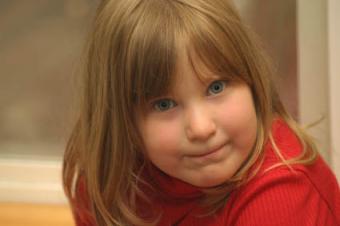
When learning about autism, it is important to understand the meaning and function of the DSM IV. Parents seeking diagnostic information on autism symptoms can find vital information in this manual.
What is the DSM IV?
The DSM IV or DSM IV-TR is the acronym for Diagnostic and Statistical Manual of Mental Health Disorders, Fourth Edition, Revised Text. The American Psychiatric Association developed the DSM to serve as the primary guide for diagnosing mental health disorders such as autism. Both mental health professionals and insurance providers refer to the manual as a diagnostic reference.
Categories of Disorders
The DSM IV categorizes autism and related disorders as pervasive development disorders (PDD). PDD is the term used to categorize neurological disorders that severely impair normal development of language, social and communication skills. The diagnostic manual assists mental health professionals in diagnosing the following PDDs:
- Autism (Autistic Disorder)
- Asperger's Syndrome
- Pervasive Developmental Disorder Not Otherwise Specified (PDD-NOS)
- Rett's Disorder
- Childhood Disintegrative Disorder (CDD)
How To Interpret the DSM IV
Doctors use the DSM to help diagnose autism in patients by looking for a certain number of indications from a specific list of symptoms for each PDD. Here is a general guide to the manual criteria:
Autism
The mental health professionals look for six or more symptoms of social impairment, one or more behaviors that demonstrate communication problems and at least one symptom of repetitive behavior when screening for autism. Examples of symptoms include lack of eye contact, preference for isolation, refusal to develop relationships with peers and family, limited to no verbal skills and repetitive behavior such as hand flapping.
Asperger's Syndrome
Asperger Syndrome may be diagnosed when a minimum of two symptoms of social skills impairment and at least one repetitive behavior are present without significant delays in developmental areas such as general language, cognitive or self-help skills. Symptoms may include inability to develop peer relationships, inability to participate in a two-way conversation and repetitive body movements.
PDD-NOS
This disorder is considered when a patient exhibits severe impairment in communication, social and language skills with repetitive behavior but does not meet the criteria for other PDDs. A person with PDD-NOS may have trouble interacting with others, limited language skills and engage in obsessive behavior such as repetitive hand washing.
Rett's Disorder
This PDD may be present when a child with previously normal development begins to have abnormal head growth between ages 5 and 48 months and starts to lose previously acquired social, communication and language skills.
Childhood Disintegrative Disorder
CDD is suspected when a child develops normally for two years and then begins to lose previously acquired language, social, communication and age-appropriate skills such as bladder control and imaginative play.
Considerations
It is important to remember that the DSM is a general diagnostic guide. Each case of autism is unique and symptoms will vary by individual. A doctor will evaluate each patient with appropriate screening tests and observation for an accurate diagnosis.
Autism Spectrum Disorders and the DSM IV
Although the DSM IV is the official diagnostic guide for autism, autism experts also use an additional classification system for diagnosis, Autism spectrum disorder (ASD). ASD is not officially a part of the DSM criteria. The ASD classification system groups classic autism, Asperger's Syndrome, PDD-NOS, Rett's Disorder and childhood disintegrative disorder together as related disorders. Some experts feel that the term PDD is too vague to fully describe autism and that the ASD classification system provides more detail about each autism related disorder.
Online Resources
The Internet has a number of websites that may be help a parent learn more about the DSM IV. Online resources include:
- Information Center: The Center for Disease Control and Prevention's Autism Information Center provides an online copy of the DSM-IV-TR's autism section.
- BBB Autism: The site provides a line by line simple interpretation of the DSM's autism criteria.
- Child Brain: Child Brain has a detailed PDD section that includes the DSM and explanations of symptoms.
Learning to interpret the DSM IV can help a parent recognize the signs of autism so that she can seek appropriate treatment for her child. It can also help a parent better understand a doctor's diagnosis. A parent who understands the symptoms and diagnostic criteria will have a better sense of how to find the right doctors and teachers for her child.







